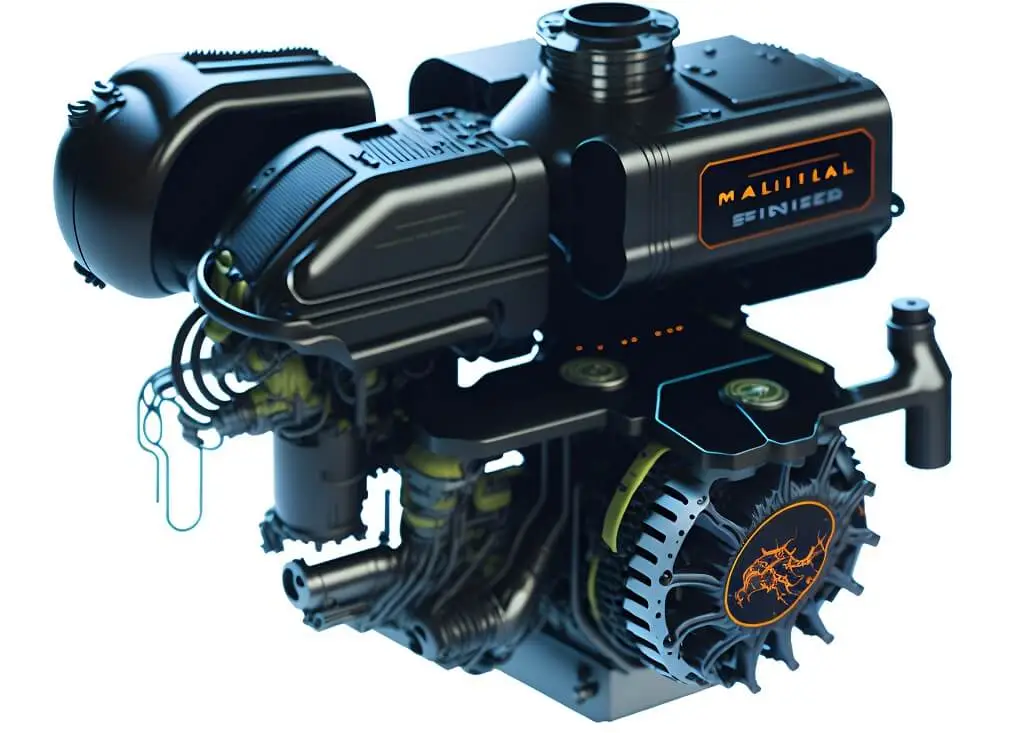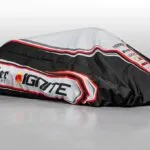A Predator 212 engine is popular for go-kart enthusiasts due to its power and affordability. In this article, we’ll delve into the factors determining the top speed of a go-kart with a Predator 212 engine. At GoKartLife, we strive to provide reliable and valuable information to help you make informed decisions about your go-karting experience.
Related Article: Best Predator 212 Stage Kits
Predator 212 Engine Specifications
The Predator 212 is a popular 212cc (cubic centimeters) 4-stroke, single-cylinder, air-cooled, overhead valve (OHV) engine widely used in various go-kart models, mini bikes, and other small motorized vehicles.
This engine is highly regarded for its affordability, reliability, and ease of modification. With a 3.54 in (90 mm) bore and 2.43 in (61.7 mm) stroke, the engine has a compression ratio of 8.5:1, allowing it to produce around 6.5 horsepower at 3,600 RPM and 8.1 ft-lbs of torque at 2,500 RPM in its stock configuration.
The engine is equipped with a recoil starter for easy starting. It features a horizontal shaft design, which makes it suitable for a wide range of applications. The Predator 212 also has a fuel tank capacity of 0.95 gallons (3.6 liters). This allows for extended usage between refueling stops.
Additionally, the engine is designed to run on unleaded gasoline with an octane rating of 87 or higher, ensuring efficient performance and reduced emissions.
How Fast Will a Predator 212 Go
The top speed of a Predator 212 engine on a go-kart, under ideal conditions and in its stock configuration, can reach up to 35 mph. However, this speed may vary depending on factors such as the weight of the vehicle, the terrain, the gearing setup, and any modifications made to the engine.
By upgrading the engine with performance parts, it’s possible to achieve even higher speeds, although this may require additional tuning and maintenance.
Related Article: The Daymak C5 Blast: Fastest Go-Kart In The World
Factors Affecting Top Speed
Several factors can affect the top speed of a go-kart or minibike with a Predator 212 engine:
- Drive wheel diameter: The size of the drive wheel impacts the top speed. Larger wheels cover more ground per revolution, potentially increasing speed.
- Gear ratio: The gear ratio determines how many revolutions the engine makes for each revolution of the drive wheels. A lower gear ratio provides more acceleration, while a higher gear ratio offers a higher top speed.
- Engine RPM: The maximum RPM of the Predator 212 engine is restricted to 3600, but modifications can increase the RPM and top speed.
Modified Predator 212
Enhancing the Predator 212 engine with performance parts can increase the engine’s RPM and top speed. Many modifications, such as aftermarket exhausts, carburetors, and air filters, are available. Remember that modifying your engine may void its warranty and may not be legal in some areas.
Conclusion
The top speed of a go-kart or minibike with a Predator 212 engine varies depending on factors such as drive wheel diameter, gear ratio, and engine RPM. Typically, these vehicles can reach speeds between 20-50 mph, with modified engines achieving even higher speeds. To learn more about go-karting and how to optimize your experience, check out our other articles at GoKartLife.com.
Related Article: Best Gear Ratio for Predator 212cc
Frequently Asked Questions
A stock Predator 212 engine typically produces 6.5 horsepower. However, with modifications and performance upgrades, achieving higher horsepower output, reaching up to 20 horsepower or more, is possible.
A Stage 4 Predator 212 engine has various performance upgrades, including an aftermarket exhaust, high-performance carburetor, and racing camshaft. With these modifications, a Stage 4 Predator 212 engine can produce approximately 15 to 20 horsepower.
A Stage 2 Predator 212 engine typically includes performance upgrades such as a high-flow air filter, aftermarket exhaust, and upgraded jetting. With these modifications, a Stage 2 Predator 212 engine can produce around 9 to 11 horsepower.
A Stage 1 Predator 212 engine generally includes an aftermarket exhaust and high-flow air filter, which improves the engine’s breathing capabilities. With these modifications, a Stage 1 Predator 212 engine can produce around 7 to 9 horsepower.

Goran, an experienced go-kart racer, fuels GoKartLife.com with his passion and expertise. He offers valuable insights and tips for fellow enthusiasts, fostering the growth of the go-kart community. Join Goran at GoKartLife.com and immerse yourself in this exhilarating sport.
Last modified: December 11, 2024



